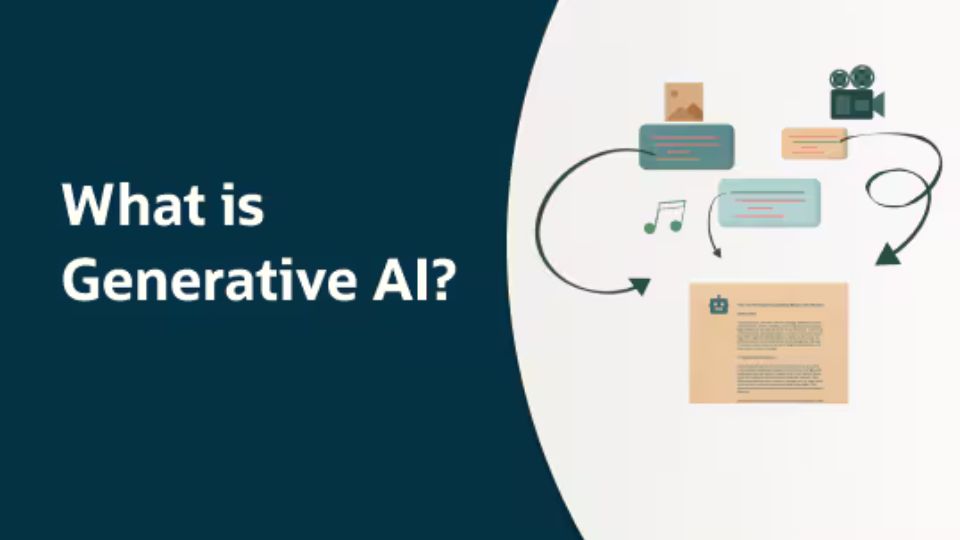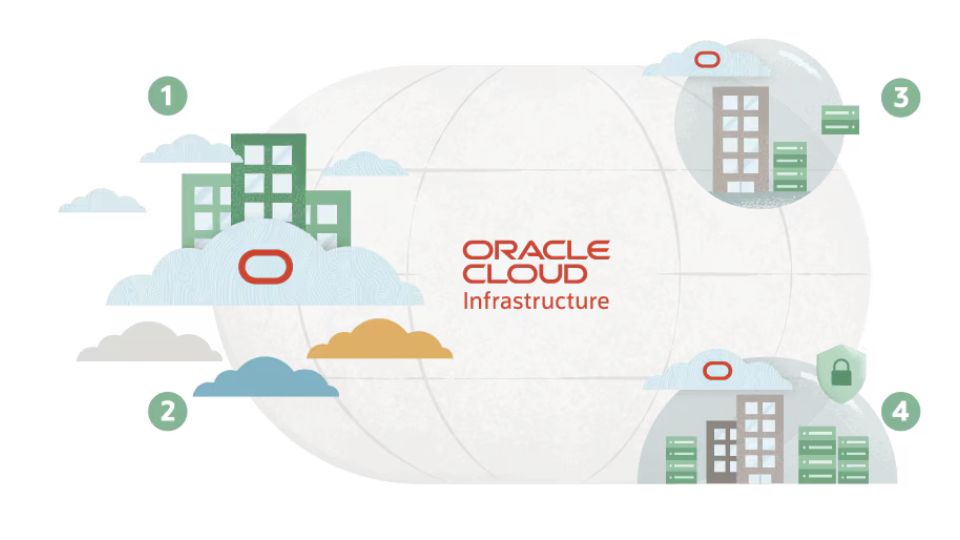AI is transforming businesses across industries, and Oracle Generative AI is at the forefront of this revolution. But here’s the bigger question – Is your organization ready to harness its full potential?
While AI has many benefits, there are also a number of challenges that can prevent organizations from reaping its full benefits. We are talking about issues such as security, compliance, integration challenges, adoption, just to name a few.
Without mitigating these challenges, AI adoption can become an uphill battle, limiting its impact and reach.
That’s where Oracle Generative AI comes into play.
Oracle Generative AI is built keeping many practical challenges in mind.
It delivers pre-trained AI models, real-time data retrieval (RAG), and seamless Oracle Cloud (OCI) integration to help businesses unlock AI’s full potential.
With Oracle Generative AI, organizations can streamline operations, optimize strategic choices, and scale efficiently. This article will dive into how Oracle Generative AI works and how you can integrate it within your organization for maximum impact.
What is Oracle Generative AI?

Oracle Generative AI is an enterprise-focused AI platform designed to automate workflows and generate content.
It also enhances decision-making with its pre-trained, high-accuracy models. What makes it unique is its ability to adapt to industry-specific needs.
To fully understand how it can transform your organization, let us take a close look at the Oracle’s Generative AI suite.
Oracle’s Generative AI Suite: How It Works

Oracle Generative AI automates workflows and supports intelligent decision-making. It adapts to enterprise needs by fine-tuning AI models with proprietary data.
Here are the key components of the Suite:
1. Oracle Cloud Infrastructure (OCI)
AI needs a secure, scalable, and high-performance infrastructure to perform at an enterprise level. That’s why Oracle Gen-AI runs on Oracle Cloud Infrastructure (OCI), ensuring efficiency, security, and compliance.
OCI offers a secure platform that powers AI applications and handles high-volume data processing efficiently. It provides scalability to handle different workloads, starting from small pilots to enterprise-wide deployments.
Oracle Generative AI meets global regulatory standards, ensuring compliance with General Data Protection Regulation(GDPR), Health Insurance Portability and Accountability Act (HIPAA), and System and Organization Controls (SOC) 2 for secure data handling.
This can be a clear advantage for enterprises because security and compliance are built-in.
It integrates directly into Oracle’s ecosystem, streamlining ERP, CRM, and supply chain operations.
With OCI’s AI-optimized architecture, businesses can process AI workloads efficiently without complex infrastructure management.
2. Oracle’s Generative AI Agents
AI-powered Agents are another feather in the cap of the Oracle Generate AI suite. These AI-powered assistants automate routine tasks, optimize workflows, and enhance decision-making.
With Oracle’s Generative AI Agents, you can:
- Implement AI-powered chatbots and virtual assistants that understand natural language and provide accurate responses.
- Reduce manual work by automating data entry, report generation, and email responses.
- AI-powered search functions to retrieve valuable insights from internal databases, enabling faster decisions.
3. Integration with Enterprise & Third-Party Systems
Another big advantage of Oracle Generative AI is the plug-and-play integrations. These integrations ensure seamless connectivity with third-party applications.
Here are the examples of how it fits into your existing ecosystem:
- Automates financial reporting, transaction reconciliation, and forecasting within Oracle ERP.
- Enhances customer interactions, and marketing insights through AI-powered chatbots in Oracle CX.
- Optimizes demand forecasting and supply chain operations using predictive analytics for Oracle SCM.
- Connects effortlessly with third-party applications embedding AI directly into your tech stack.
With deep integration capabilities, Oracle Generative AI enables AI-driven automation without disrupting workflows or requiring major system overhauls.
Next, let’s explore what makes Oracle’s generative AI different from other AI solutions.
Key Features of Oracle Generative AI: What Sets It Apart?
While many AI models focus on general-purpose applications, Oracle designed Generative AI that’s secure, customizable, and enterprise-ready.
Let’s explore the key features of Oracle’s Generative AI Model.
1. Pre-Trained Large Language Models (LLMs)
Most generative AI tools rely on public datasets, leading to inconsistencies, bias, and compliance risks. Oracle Generative AI uses industry-specific, high-quality data to ensure secure, and regulation-compliant AI outputs.
With over 50 embedded AI capabilities within Oracle Fusion Applications, it enhances decision-making, automates workflows, and improves operational efficiency.
Features like AI-powered insight narratives in ERP and automated item description generation in SCM showcase its ability to optimize key business functions. Enterprises can fine-tune models with proprietary datasets, aligning AI-generated content with business needs.
Oracle Generative AI provides specialized models for industries like finance, healthcare, legal, and retail. Businesses get AI that speaks their language and understands their workflows.
2. Text Generation, Summarization, and Embedding Functionalities
Oracle Generative AI goes beyond chatbots, offering text generation, document summarization, and AI-powered search.
It automates content creation, generating personalized reports, business documents, and responses. It also summarizes lengthy contracts and reports, allowing employees to extract valuable insights quickly.
AI-powered search and recommendations improve knowledge retrieval, making it easier to find relevant business data. These features reduce manual effort and enhance knowledge management.
3. Retrieval-Augmented Generation (RAG)
Traditional AI models solely depend on static or pre-trained data, often producing outdated or inaccurate responses.
Oracle’s RAG solves this issue by continuously fetching real-time enterprise data, ensuring AI-generated insights are accurate, relevant, and free from speculation.
4. Content Moderation and Ethical AI Considerations
AI must align with ethical standards and company policies, ensuring fairness and compliance in business operations.
Oracle Generative AI helps businesses use AI responsibly by integrating bias detection, content moderation, and explainability tools. These safeguards keep AI-generated content compliant, and transparent.
It detects and minimizes bias to prevent unfair or discriminatory outputs. Its enterprise-grade content moderation filters AI responses to meet compliance and industry standards.
With explainability and governance tools, businesses gain visibility into AI decision-making, maintaining transparency and trust.
But how can you implement these AI capabilities in your business?
Let’s explore that in the next section.
Setting Up and Accessing Oracle Generative AI
Oracle designed Generative AI for easy enterprise adoption. Whether you’re exploring its capabilities or deploying AI models at scale, OCI ensures seamless integration into your business.
Here’s how you can get started:
1. Accessing Oracle Generative AI in OCI
To use Oracle Generative AI, you first need to set up access in OCI. This setup enables you to manage AI capabilities effectively while ensuring compliance and control.
2. Using the Generative AI Playground
Once you have access to Oracle Generative AI, you can test its capabilities using the Generative AI Playground. This interactive tool allows you to:
- Test different AI models
- Adjust parameters for fine-tuning
- Evaluate outputs before full deployment.
3. Deploying AI Models in Enterprise Environments
Once you’ve tested Oracle Generative AI, the next step is deploying AI models into real-world applications.
Oracle offers flexible deployment options, including:
- API integration for seamless connectivity
- Cloud deployment services for scalability,
- On-premise hosting to match your business needs.
Once successfully integrated, Oracle Generative AI is ready to enhance enterprise operations. Businesses can continuously monitor AI performance, refine configurations, and expand automation based on evolving needs.
Let’s see how Generative AI is transforming industries.
Real-World Use Cases of Oracle Generative AI
Oracle Generative AI is driving innovation across industries through process automation and enhanced customer experiences. Using Oracle’s AI, businesses can enhance efficiency, personalize customer experiences, and optimize operations.
Let’s explore the practical applications of Generative AI:
1. Financial Services
Banks and financial institutions analyze market trends, detect fraud, and generate financial reports using Oracle Generative AI.
AI-powered tools scan news sources to refine investment strategies and assess risk in real time, helping firms make data-driven decisions.
2. Retail
Retailers create personalized shopping recommendations, generate product descriptions, and automate marketing with Oracle AI.
AI chatbots handle customer queries instantly, improving service and boosting sales.
3. Healthcare
Healthcare providers automate administrative tasks, generate doctor discharge notes, and create personalized treatment plans.
AI improves patient communication, manages resources, and enhances care quality.
4. Human Resources
With AI, HR teams can manage hiring and employee processes, such as writing job descriptions, screening candidates, and onboarding.
AI-generated insights help HR professionals design career development plans and evaluate performance.
5. Marketing
Marketers automate content creation, analyze customer data, and optimize branding strategies with Oracle AI.
Companies now craft more effective campaigns using AI to write blog posts, draft video scripts, and forecast customer churn.
6. Sales
Sales teams use AI to automate customer profiling, analyze client data, and generate personalized outreach strategies.
AI-driven assistants enhance sales forecasting, provide recommendations based on customer behavior, and create data-backed training materials.
7. Software Development
Developers accelerate coding by using AI to generate, refine, and optimize code.
AI assists in creating test cases, debugging programs, and drafting IT architecture. Additionally, AI reduces development time, minimizes errors, and enhances software quality.
8. Customer Support
Customer service teams improve response times and efficiency by integrating AI-powered case summarization and chatbots.
AI quickly analyzes customer inquiries, suggests relevant solutions, and automates issue resolution.
As AI adoption grows, companies need solutions that evolve with emerging challenges and opportunities. Oracle continues to refine its Generative AI capabilities, ensuring enterprises stay ahead of the curve.
Next, let’s explore Oracle’s upcoming AI advancements and how they can enhance your business operations.
Future Roadmap and Innovations
Oracle continues to refine AI capabilities, collaborating with leading AI partners like Cohere to expand its generative AI offerings. These partnerships help Oracle deliver innovative AI solutions tailored for enterprise environments.
Here’s what’s next for Oracle Gen-AI:
1. Smarter AI in Fusion Cloud Applications
Oracle is embedding 50+ generative AI features into Fusion Cloud, covering finance, HR, supply chain, sales, marketing, and customer service. These AI tools automate tasks, generate insights, and streamline decision-making.
2. Seamless Multi-Cloud Expansion
Oracle is expanding AI-ready databases to AWS, Azure, and Google Cloud. Businesses can now deploy AI securely and flexibly across multiple cloud environments.
3. Scaling AI Infrastructure
Oracle is building an AI supercomputer with 131,072 NVIDIA Blackwell GPUs, delivering 2.4 zettaFLOPS of processing power. Enterprises can train and deploy AI models faster than ever.
4. AI-Powered Business Applications
Generative AI is now embedded in Fusion, NetSuite, and Oracle’s industry-specific SaaS applications.
These solutions enhance workflows, automate processes, and optimize decision-making.
Conclusion
Adopting Generative AI gains momentum, it is becoming a must-have tool to scale organizational growth and improve efficiency across the board. However, organizations must implement these technologies with a certain level of responsibility and integrity.
According to McKinsey’s 2024 survey1, 65% of businesses now use Generative AI regularly. However, inaccuracy remains the most common risk in AI adoption.
Oracle addresses these challenges with a secure, compliant, and enterprise-ready solution.
With Oracle’s robust infrastructure and responsible AI framework, your business can seamlessly integrate Generative AI, for faster growth, better innovation, and lesser risk.
Ready to unlock AI’s full potential for your business?
To explore the possibilities together today


Frequently Asked Questions
1. What languages does Oracle Generative AI support?
It supports multiple languages for text generation, summarization, and embeddings. The specific languages depend on the AI model selected.
Enterprises requiring multilingual AI can customize Oracle’s models to fit their business needs.
2. How does Oracle Generative AI compare to other generative AI platforms?
Oracle created Gen-AI for enterprise use cases. It offers built-in security, compliance, and deep integration with Oracle Cloud applications.
It also ensures data privacy and enterprise-grade performance while maintaining compliance with industry regulations.
3. How does Oracle Generative AI handle data privacy and security?
Oracle incorporated enterprise-grade security, including end-to-end encryption, role-based access control (RBAC), and data isolation into the Generative AI design.
It ensures compliance with GDPR, HIPAA, SOC 2, and ISO 27001, protecting sensitive business data and maintaining regulatory standards.
4. Can we customize Oracle Generative AI for specific industry use cases?
Yes. Oracle allows enterprises to customize AI models with proprietary datasets to create industry-specific applications.
Businesses can use Retrieval-Augmented Generation (RAG) to improve AI-generated content by incorporating real-time, organization-specific data. This ensures greater accuracy and relevance in AI-driven outputs.
5. What are the deployment options for Oracle Generative AI?
Oracle Gen-AI can be deployed in multiple ways:
- API Integration – Integrate AI into existing applications using Oracle’s API.
- Oracle Cloud Deployment – Run AI models securely on Oracle Cloud Infrastructure (OCI) with scalable computing resources.
- On-Premise Deployment – Enterprises that require full control over AI processing and security can host Oracle AI on-premises, ensuring data protection.







